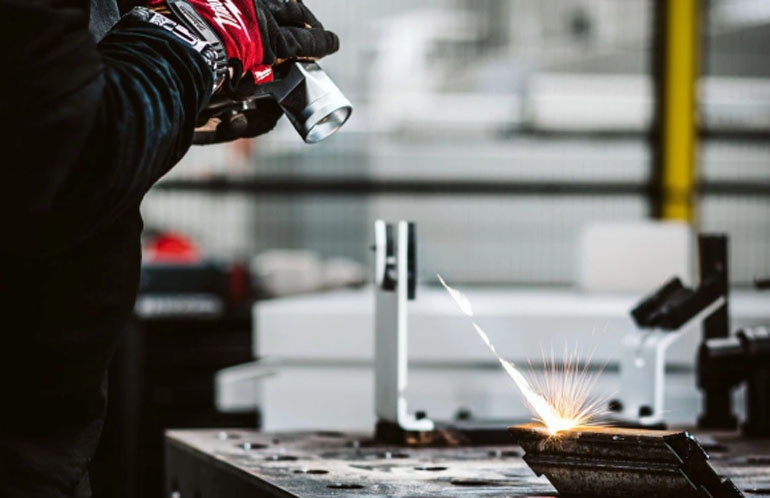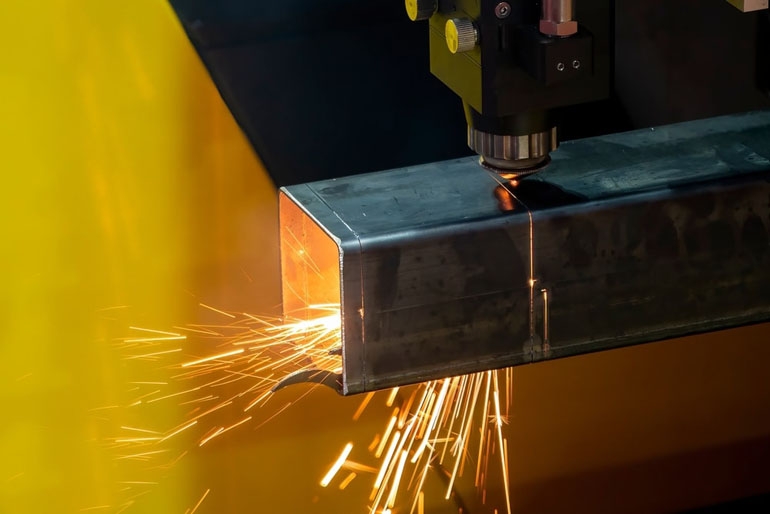Laser technologies in industry have gained enormous popularity thanks to their precision, efficiency, and wide application. Modern laser processing methods allow companies to increase production efficiency, reduce material losses, and lower operational costs. One of the most innovative solutions on the market is the fiber laser, which offers unparalleled processing quality, durability, and the possibility of process automation. Investing in this technology is a step towards modern production adapted to the challenges of the contemporary market.

How do laser technologies work? A brief overview
Industrial lasers play a key role in modern metal processing, offering precision, speed, and repeatability that traditional methods cannot provide. This technology finds wide application in processes such as cutting, welding, cladding, and surface cleaning. Contemporary laser technologies enable extremely precise processing of virtually any type of material, achieving accuracy at the level of 1-2 μm. Thanks to the ability to shape both 2D and 3D structures, lasers are the most versatile tool among industrial processing methods.
The operation of lasers is based on a focused beam of laser radiation, which interacts with the processed material with extraordinary accuracy. In the case of laser cutting, this allows for the creation of smooth edges without the need for additional processing, which in turn translates into savings in time and material. For welding, it enables joining even the thinnest and most demanding elements with minimal heat impact, reducing the risk of deformation and improving the quality of the weld.
Various types of lasers are used in industry, including CO₂ lasers used mainly for cutting and engraving non-metals, such as wood, glass, or plastics. They are characterized by high power, but are less effective in metal processing. YAG (Nd:YAG) lasers are used in metal welding and marking processes. Their advantage is the ability to work on various materials, however, they require the use of expensive light sources. Fiber lasers are currently the most advanced and efficient solution on the market. Thanks to the use of optical fiber as a medium conducting the laser beam, they provide exceptional precision, stability, and energy efficiency.

Advantages of investing in fiber laser technology
Investing in fiber laser technology is a step towards modern, efficient, and economical production. Compared to traditional metal processing methods, fiber lasers offer much greater precision, speed, and lower operating costs. As a result, companies can improve the quality of their products, streamline the production process, and reduce material losses. Below are the most important advantages of this technology.
Versatility of application
Fiber laser is a technology that finds wide application in various industrial sectors. Thanks to its precision and efficiency, it is used for processing materials such as carbon steel, stainless steel, aluminum, copper, or brass. The possibility of applying this technology in many processes - welding, cutting, cleaning, and cladding - makes it a key element of modern industrial production.
Advantages of laser technologies in metal processing
Laser cladding
Laser cladding involves melting additional material (e.g., metal powder or wire) with the substrate surface using a laser beam, which forms a durable and wear-resistant protective layer. Thanks to the application of laser technology in this process:
-
distortions are minimized thanks to a precisely controlled melting process,
-
the fine-grained structure of the clad ensures excellent mechanical properties,
-
it is possible to clad complex shapes,
-
the process is automated, which increases repeatability and efficiency.
Laser cleaning
Laser cleaning technology allows for quick and effective removal of contaminants, rust, or coatings from various surfaces without the use of chemicals. Thanks to the use of laser, this process provides numerous benefits - the most important of which include:
-
no substrate damage - laser cleaning does not cause abrasion or deformation of the material, which makes it exceptionally safe,
-
no need to use chemicals - this technology is an ecological solution, eliminating the need for aggressive preparations,
-
high effectiveness in removing impurities from metals thanks to the precise action of the laser beam.

Laser cutting
Fiber laser is one of the most advanced solutions for precise cutting of various materials. Thanks to high power and advanced optics, fiber lasers offer:
-
extremely accurate cutting without material losses,
-
minimization of thermal deformations thanks to a fast cutting process,
-
high edge quality, eliminating the need for additional mechanical processing,
-
the ability to cut sheets, pipes, and profiles (both thin and thick metal sheets)
Read: What is laser cutting?
Laser welding
Laser welding is a modern method of joining metals that provides exceptional precision and durability of connections. The most important advantages of fiber technology in welding include:
-
minimization of heat impact on the welded material, limiting deformations,
-
high quality and aesthetics of the weld, eliminating the need for additional processing,
-
the ability to weld thin materials and complex structures,
-
excellent repeatability thanks to automation of welding processes and robotization.
Check out: Advantages and challenges in laser welding
Strategic technology
Fiber laser is a strategic technology used in key industries such as automotive, aerospace, electronics, and medical. Thanks to its versatility and precision, it is used in the production of advanced components where quality, durability, and process repeatability are important.

Precision, speed, and cutting quality
Fiber laser offers unparalleled processing precision, which is crucial in terms of minimizing material losses and excellent edge quality. Fiber laser enables processing of both thin and thick materials without the need for additional finishing.
Lower operating costs
Investing in fiber laser is also a saving on operating costs. Compared to traditional technologies
-
it consumes less energy,
-
does not require expensive and time-consuming maintenance procedures,
-
has a longer lifespan.
Thanks to their efficiency, fiber lasers minimize production downtime, which significantly affects the profitability of the company. Every production line stoppage is a real financial loss, both in the form of delays in order fulfillment and additional costs associated with failures or inefficient machine operation. Fiber laser, thanks to its reliability, high durability, and limited maintenance requirements, allows for uninterrupted production. This means that the company can increase its efficiency, fulfill more orders in less time, and thus increase its revenue. Moreover, the high quality of laser processing eliminates the need for corrections, thus minimizing material losses and labor costs.
Discover fiber laser technology from Fanuci & Falcon
Fanuci & Falcon is a leading provider of modern laser solutions, offering advanced fiber laser systems for industry. Our offer includes devices that meet the highest quality standards, guaranteeing reliability, precision, and long service life. Thanks to modern laser technologies, we support companies in optimizing production processes, providing them with a competitive advantage in the market.
Bibliography
-
Andrzej Kimpel, Modern lasers and laser technologies in welding engineering, Ed. Silesian University of Technology 2023.
-
Agnieszka Twardowska, Technological lasers designed for welding, "Annales Universitatis Paedagogicae Cracoviensis Studia Technica", III (2010), https://rep.up.krakow.pl/xmlui/bitstream/handle/11716/10535/AF074--25--Lasery-technologiczne--Twardowska.pdf?sequence=1&isAllowed=y,
-
Andrzej Klimpel, Theoretical foundations of laser cutting of metals, "Welding Review", 6/2012, https://www.researchgate.net/publication/323326207_Podstawy_teoretyczne_ciecia_laserowego_metali
-
J. Pilarczyk, S. Stano, M. Banasik, J. Dworak ,The use of laser techniques for welding small-sized elements at the Laser Center of the Welding Institute, "Operation Problems", no. 4 2011.
-
K. Cziba, M. Serweciński, M. Bonek, Laser cladding, Works of the Institute of Engineering and Biomedical Materials, PSKN, notebook no. 31 2014.
-
R. Barbucha, Laser micromachining of metals, "Steel Metals & New Technologies", volume 1-2 2018.
